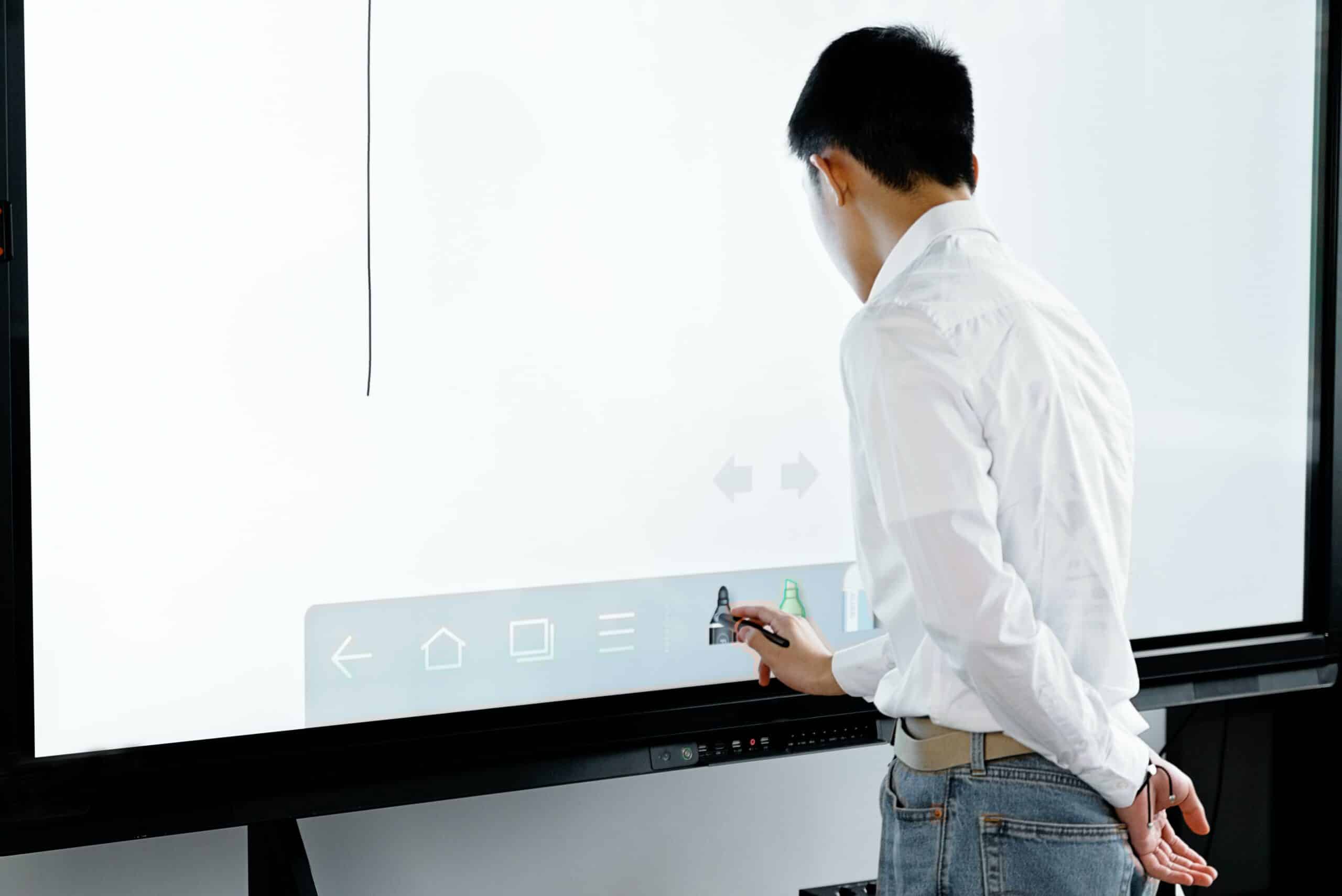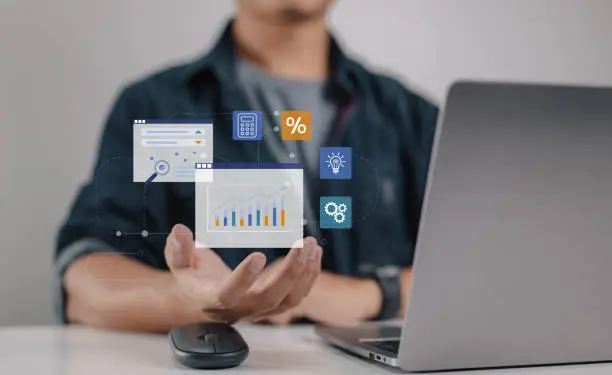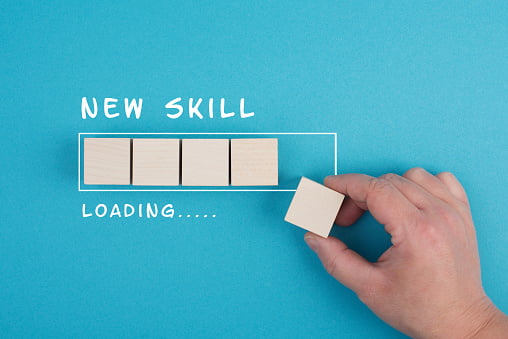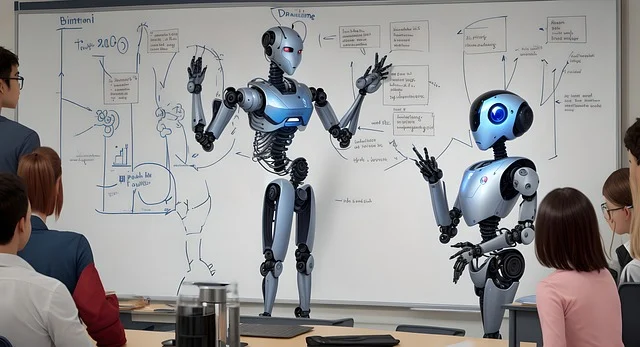Interactive Whiteboard: The 1 Perfect Tool to Engage Your Students

An interactive whiteboard (also known as an interactive learning board, smartboard, digital blackboard or SMART Board) is a digital teaching tool that enhances the learning experience by making it more visual and dynamic. It allows teachers to effectively engage students and create a more collaborative learning environment.
Interactive white boards are used in both primary and secondary schools across the world. They are particularly useful for engaging learners and fostering group collaboration. An interactive white board can be either stand-alone or be part of a larger Learning Management System (LMS).
What is an Interactive White Board?
An interactive white board is a dry-erase whiteboard writing surface that can capture writing electronically. Interactive whiteboards require a computer. Some interactive whiteboards also allow interaction with a projected computer image.
Considering our article on “technologies in the classroom: past, present and future“, most interactive whiteboards are connected to computers using USB cables. But some recent models communicate wirelessly using Bluetooth technology. Making it a seamlessly fun tool for lively classroom interactions.
Types of Interactive White Boards
There are two main types of interactive whiteboards – the ones with a built-in computer and the ones that use a computer connected to the board.
A built-in computer interactive whiteboard comes with an LCD display, computer and an electromagnetic pen. The computer is usually connected to a projector.
An external computer interactive whiteboard usually comes with a large LCD display and a computer. However, it does not have any hardware for projecting information. Instead, it is connected to another computer that is used to project information on the screen.
Depending on the type of interactive white board that you choose, it can be used to create presentations, collaborate on and edit documents, create diagrams, and more. Many whiteboards come with interactive software that you can use to create presentations, process data, and more.
How to Select the Right SMART Board for Your Classroom
Choosing the right type of interactive white board for your classroom will depend on a number of factors. You will need to consider your budget, the size of your classroom, and the type of software that comes with the board.
Before you make your final decision, make sure that you have checked the reviews and ratings of different boards to make sure that you are getting the best product for your money.
You can also ask your friends and colleagues for feedback and recommendations.
Here are some of the things that you need to keep in mind when choosing an interactive whiteboard.
What type of software does the board come with? – Is the board compatible with the software that you already use in your classroom?
What is the size of the board? – The size of the board will depend on the size of your classroom and the space that you have available.
What are the hardware and warranty information? – You will want to make sure that the board comes with a long warranty to protect your investment.
Is there a teacher console option? – This is an important feature that you should look for in the board that you choose.
How an Interactive Whiteboard Works
The basic working principle of an interactive whiteboard is this.
A large screen display is fixed on the wall or a desktop LCD or projector screen. The user can write or draw on the screen using a special pen that can transmit its signal to the computer.
The computer then transfers the information onto the screen, where it can be viewed by students. An interactive white board works by using an electromagnetic pen tethered to a computer.
When you write on the board, it is converted into digital format and immediately displayed on the computer screen.
It works the other way too – when you write on the computer screen, it is displayed on the whiteboard.
A typical interactive white board set-up consists of a large LCD screen (or sometimes a large projection screen) that is fixed on the wall, a computer, a projector, an electromagnetic pen and a camera. The large LCD screen on the wall is where the audience can see what you are writing or drawing.
The computer and projector are used to display information from the computer screen. The camera is used to transmit what you are doing on the whiteboard back to the audience.
Should You Get an Interactive Whiteboard for Your Classroom?
Why Are Interactive Whiteboards So Popular?
So, if you are looking for a way to enhance the learning experience in your classroom, an interactive whiteboard is an excellent option. It is the perfect tool to engage your students and improve their engagement and retention. An interactive whiteboard will help you create a more engaging, collaborative learning environment.
- An interactive whiteboard is a great tool for engaging students, promoting collaborative learning and improving retention.
- It can be used to create a real-life, hands-on experience that is not possible with other more traditional forms of learning.
- Interactive whiteboards are particularly useful for visual learners and students who like to use their hands as they learn.
- An interactive whiteboard can also be used as an effective teaching tool by teachers.
- It can be used to create visual aids and colourful presentations that bring subjects to life and make them more interesting.
- It can also be used to facilitate group work and enhance collaboration among students.
Photo by OpenClipart-Vectors on Pixabay
Benefits of Using an Interactive Whiteboard
There are many benefits of using an interactive whiteboard to engage students and improve their learning. Here are some of the most important ones.
A visual learning environment – The main benefit of an interactive whiteboard is that it creates a visual learning environment. Students are more engaged when they can see information on the board being projected onto the wall or screen. They are better able to process and recall information if they can see it visually.
Engaging students in group discussions – The interactive whiteboard is an effective tool for engaging students in group discussions. It is a great way to get students interacting with one another and sharing their ideas. It also provides a visual guide that students can use to refer back to later.
Collaborative learning – An interactive whiteboard is the perfect tool for collaborative learning. It encourages students to work together to solve problems by sharing ideas, information and perspectives. It is also helpful for group work and project-based learning.
Student assessment – An interactive whiteboard is a great tool for assessing students’ progress and understanding. It is helpful for checking students’ understanding of concepts by facilitating group discussions, debates, etc.
How to use an Interactive Whiteboard in a Classroom
Wondering how to use an interactive whiteboard in a classroom in Nigeria? Consider these ideas.
Presentations and Projects
Interactive whiteboards can be a very effective tool for students when making presentations and when carrying out projects. During classroom activities students can present multimedia projects with the interactive whiteboard, with an additional advantage of controlling the entire presentation without touching a computer keyboard.
Web Streaming and Video
Interactive whiteboards can enable educators to show streamed or downloaded educational video clips while teaching using programs like Windows Media Player and QuickTime. Videos saved in the multimedia presentation programs are easily shown.
The whiteboard is so interactive that it is possible to pause, circle, annotate, and highlight on the board while teaching. A DVD or VHS player can be connected to the projector too. Using this white board is a way of engaging passive learners in classroom discussion.
Printing and Saving Notes
Interactive whiteboards also provide the opportunity to print or save anything written on it. With this board educators can put share notes to students in a shared server for students to download or have the notes posted on a Web page or blog. These are printed out from the board and distributed. Thereby allowing students to focus on the classroom lessons instead of simply copying from the board.
Encouraging Critical Thinking
The interactive whiteboards does not only encourage classroom participation, it enables brainstorming sessions in the class. Imagine the speed at which the board can provide maps or statistics enable for mind simulating discussions. The ideas of students is displayed on the board. With the outline view of the board the class can brainstorm on a subject in organized manner.
For Students with Special Needs
Students with special needs can benefit from the uses of interactive whiteboards in their learning process. The large fonts and bright colors that come with the boards can make lessons easily visible, even to visually impaired students. Students who respond well to kinesthetic learning can benefit from touching the board.
Read also: How Assistive Educational Technology Supports Students With Disabilities.
Conclusion
An interactive whiteboard is a great tool for engaging students, promoting collaborative learning, and improving retention. Interactive whiteboards are particularly useful for visual learners and students who like to use their hands as they learn. If you are looking for a way to enhance the learning experience in your classroom, an interactive whiteboard is an excellent option. It is the perfect tool to engage your students and improve their engagement and retention.







